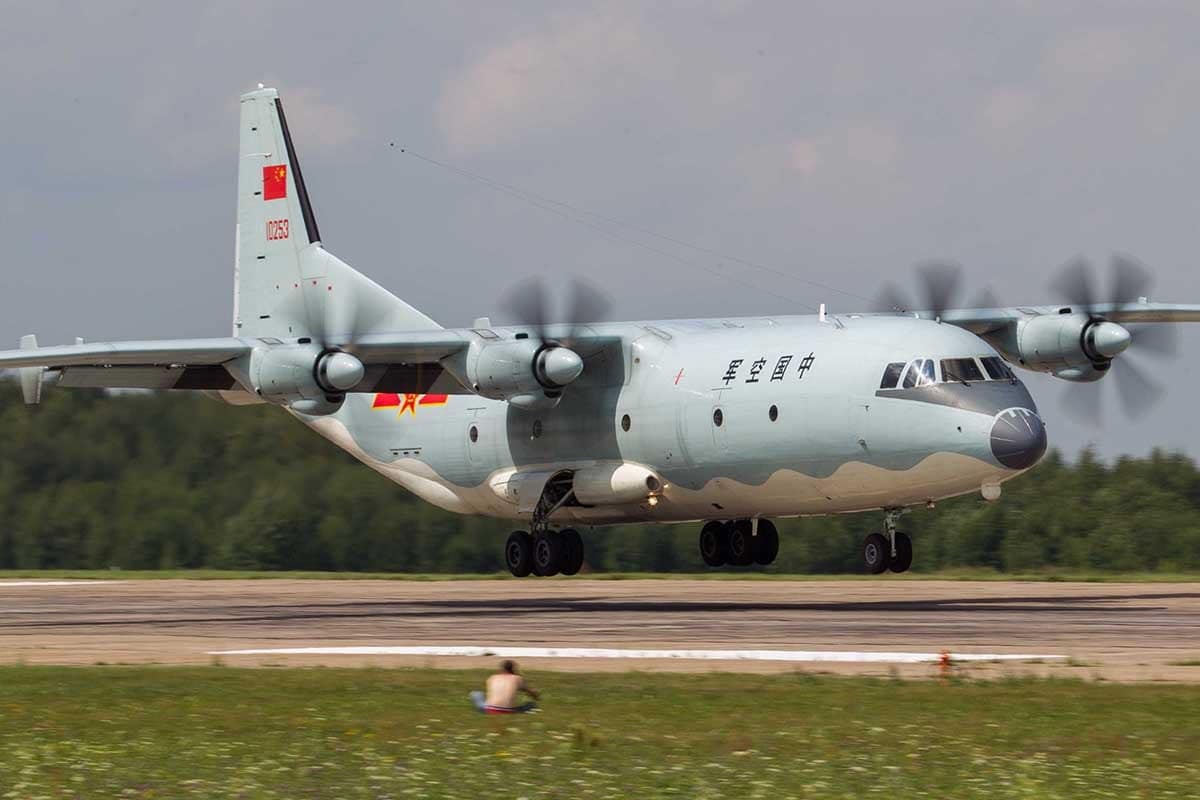When it is time to do a spying, snooping, and jamming job from the air, China relies on the Shaanxi Y-9JB electronic intelligence airplane. The Y-9JB is the top platform that conducts electronic warfare and helps monitor air traffic when Chinese fighters and bombers take to the sky. The Y-9JB also has the ability to fly with reconnaissance drones over contested airspace to increase the amount of intelligence collected from unmanned flights.
Japan and Taiwan Are the Targets
Over the last few years, the Y-9JB has pestered the Japanese. The Japan Air Self-Defense Force has been forced to scramble fighters in order to ward the Chinese spy plane off. The Y-9JB also flies in support of China’s missions that encroach into Taiwan’s air defense identification zone.
Born from a Large Cargo Plane
The Y-9JB is a variant of the Y-9 cargo airplane. The Y-9 could be compared to the American C-130 Hercules. The Y-9 was introduced in 2012 and can haul 55,000 pounds with a range of 3,700 nautical miles. Like the C-130, the Y-9 can drop paratroopers.
Conversion to Electronic Warfare Happened Seven Years Ago
In 2015, a Y-9 was spotted with modifications that made it look like the Chinese were converting it into a spy plane. The modified transporter had at least nine new antennae, additional fairings, and a newfangled nose pod likely housing advanced sensors. In addition to intelligence, surveillance, and reconnaissance flights, the Y-9JB can also conduct electronic warfare and electronic countermeasures on an adversary.
Degrade and Deny Enemy Radar and Communications
The idea is to disrupt radar by producing a level of noise to hide echoes that the radar needs to function properly. Communications jamming means the signal-to-noise ratio is degraded enough to deny service. The Y-9JB can also listen in to enemy communications and monitor where radar signals are coming from.
The Y-9JB has received upgrades to its engines for improved range and speed. Each turboprop engine pushes out 5,000 horsepower. The airplane can fly at higher altitudes with a better cabin pressurization system.
Electronic Intelligence and Warfare Not Going Away
Japan and Taiwan will have to deal with the Y-9JB because it appears the electronic warfare and intelligence airplane will be a fixture in any flight of bombers and fighters that make incursions into their air defense identification zones. The airplane will take note of how Japan and Taiwan use communications and radar to spot incoming enemy aircraft. China will learn from this intelligence to better acquaint their air force for future missions.
It is not clear if China has actively jammed or spoofed Taiwanese and Japanese radar or communication since the beginning of this year. But China is likely giving their own electronic warfare and intelligence crews and analysts plenty of data to process. This will result in the People’s Liberation Army Air Force (PLAAF) gathering clues on how to better disable adversarial radar and communications in the future.
China Is Getting Excellent Training for the Real Thing
It seems like every time observers, reporters, and analysts portray the PLAAF in open source intelligence the Chinese are making improvements. Each time they fly a mission to encroach on an ADIZ they get better. Why would they stop? They are getting outstanding training and intelligence opportunities every time they fly into an ADIZ. All Taiwan and Japan can do is scramble interceptors, use radio messages to warn the PLAAF off, or ready their air defenses. It is a saga that repeats and becomes more intense each year.
You will likely read more accounts about the Y-9JB as it tags along on PLAAF missions. And if the balloon goes up and China attacks Taiwan from the air, the PLAAF’s favorite electronic warfare bird will be in the background sending out jamming and spoofing signals to blind Taiwan’s air defenses. Let’s hope that doesn’t happen.
Now serving as 1945’s Defense and National Security Editor, Brent M. Eastwood, PhD, is the author of Humans, Machines, and Data: Future Trends in Warfare. He is an Emerging Threats expert and former U.S. Army Infantry officer. You can follow him on Twitter @BMEastwood.

